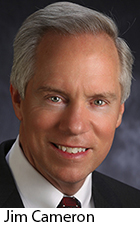
Debunking ‘Myths’ About Loan Officer Age
You’ve heard about it (probably here in MBA NewsLink): the average loan officer is in his (yes, a “he”) late 50s and has no clue how to connect with the wave of Millennial home buyers.
Not so fast, says STRATMOR Group, Greenwood Village, Colo. In its latest Insights Report, four years of aggregate data from its Originator Census Survey shows the average age of today’s loan officer is somewhat younger–between 46 and 47 years old.
Furthermore, said STRATMOR Senior Partner Jim Cameron, while many lender CEOs perceive loan officers to be six to eight years older than they really are–and that their age makes a difference in their productivity–data show productivity is not age-driven. Additionally, he said, the commonly held belief that younger borrowers, particularly Millennials, would prefer dealing with a loan officer closer to their own age is not supported by data, either.
 “The perception that loan officers, as a group, are ‘old’ and borrowers aren’t satisfied with their LO–at any age–isn’t reality,” Cameron said. “There’s a concern expressed by many lender CEOs that their loan officers are getting too old for the borrowers they need to serve. Many believe that the average LO is 52-55 years old, that the LO’s age makes a difference in his or her productivity and that younger borrowers–like Millennials–would prefer dealing with an LO closer to their own age. The data just doesn’t support this view.”
“The perception that loan officers, as a group, are ‘old’ and borrowers aren’t satisfied with their LO–at any age–isn’t reality,” Cameron said. “There’s a concern expressed by many lender CEOs that their loan officers are getting too old for the borrowers they need to serve. Many believe that the average LO is 52-55 years old, that the LO’s age makes a difference in his or her productivity and that younger borrowers–like Millennials–would prefer dealing with an LO closer to their own age. The data just doesn’t support this view.”
The Originator Census Survey shows both the average and median LO age to be between 46 and 47 years old. That’s four years higher than the median age of all American workers, but just two years higher than financial industry workers.
“The average age of a purchase borrower is just under 43 years old–hardly an impassable age difference from that of the LO,” Cameron said. “If we take first-time homebuyers out of the equation, that average age climbs to 46, right on par with the LOs themselves. Loan officer age doesn’t seem to matter to borrowers, either–not even Millennials.”
However, Cameron noted the industry is in the midst of change. “The story here is that, like much of corporate America, the mortgage industry is facing an aging workforce and as an industry, we need to be bringing in younger talent to become the knowledgeable, dependable loan officers that serve borrowers of all ages,” he said.
To do so, Cameron said lenders must develop better tools and techniques for attracting and developing new originator talent and retaining existing talent. The alternative is to grow market share by cannibalizing successful loan officers from other lenders. This “business-as-usual game of musical chairs,” he said, often involves costly signing bonuses and guarantees, a situation that is obviously beneficial to loan officers, but not for lenders.
“If current trends continue and consumer direct and self-service origination technologies become dominant long-term for both refinance and purchase originations, the problem may simply go away, with LOs losing the market power and leverage that they have today,” Cameron said.
The December edition of Insights is available at http://www.stratmorgroup.com.
